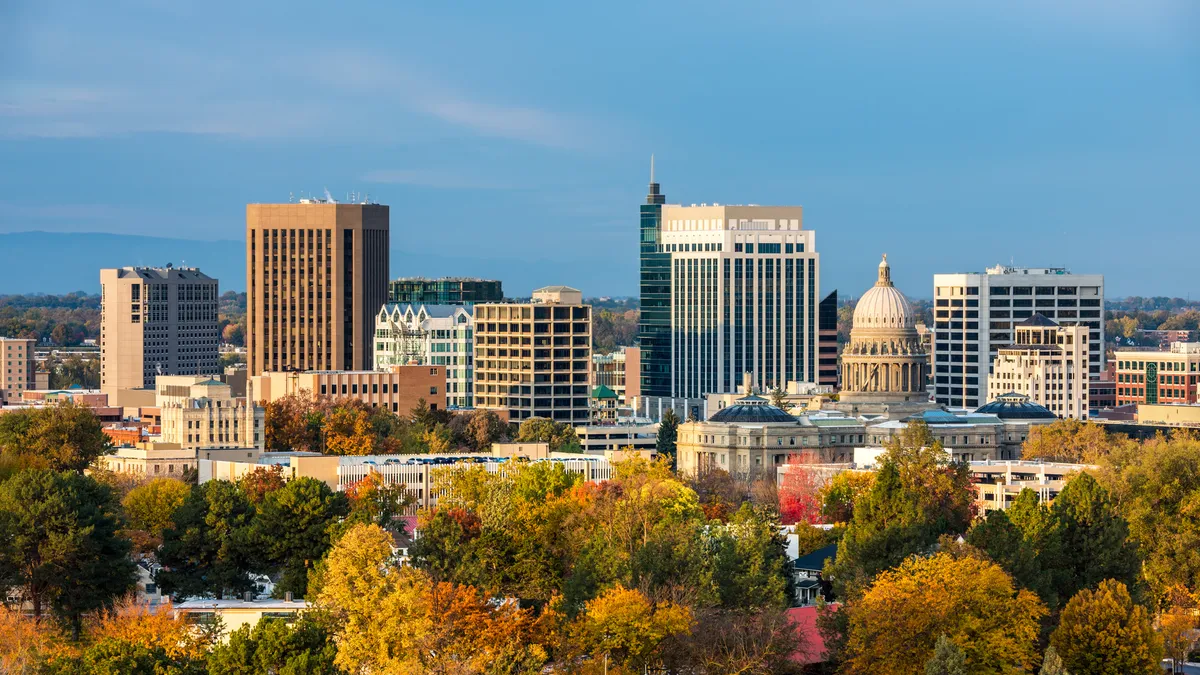COVID-19 shut down offices around the country in 2020, suddenly freeing people to move to smaller and less expensive cities, also known as Zoom towns.
These cities, which increased in popularity among U.S. residents who use videoconferencing to work remotely during the pandemic, are still attracting strong interest from apartment investors. In fact, interest in these metros, like Boise, Idaho, preceded the pandemic. From 2009 to 2021, investment in these towns jumped more than 2,000%, according to RealPage.
Scottsdale, Arizona-based Alliance Residential, the nation's second-largest apartment developer, has moved into Zoom towns over the last few years. "We're in a lot of different markets that we previously weren't in — the Boises of the world or Colorado Springs or some of the smaller markets," said Jay Hiemenz, president and COO of Alliance.
As more dollars pour into Zoom towns and new apartments are being built, some people wonder what happens to these areas if workers are called back into the office. Overall, 4.9 million people left cities for rural areas in 2020, according to the U.S. Census Bureau.
"Some of these markets were growing, but they weren't growing fast," said Todd Metcalfe, a senior economist at Moody's Analytics. "Now, all of a sudden, they're outpacing everyone. Long-term growth rates will come back to normal levels."
Huntsville, Alabama, leads the pack, with apartment stock there slated to grow by 16.5%. Other major Zoom towns such as Boise, Idaho; Charleston, South Carolina; Colorado Springs, Colorado; and Reno, Nevada, will all see inventory growth between 7% and 8% in 2022, according to RealPage.
"If there are pockets of risk, it's where you are seeing people who are are putting shovels in the ground to develop units based on what they perceive to be this structural change in migration patterns because of the pandemic," said Ryan Severino, chief economist for the Chicago-based commercial real estate services firm JLL. "I'm not sure how durable that is."
Winners and losers
Although Hiemenz thinks growth in these markets is generally sustainable, some of them may only support one or two deals a year. "Every market can get overbuilt," he said.
Small markets with the most predicted inventory growth
| Market | Projected Inventory Change (2022) |
| Huntsville | 12.8% |
| Nashville | 6.9% |
| Austin | 6.8% |
| Reno | 6.2% |
| Charleston | 5.7% |
| Phoenix | 5.7% |
| Port St. Lucie | 5.3% |
| Colorado Springs | 5.3% |
| Raleigh/Durham | 5.3% |
| Boise | 5.1% |
SOURCE: RealPage
But which ones can absorb new supply? Different analysts have different opinions. If a market is diversifying its amenities, such as in Boise, Greenville, South Carolina, Charleston and some of Florida's smaller markets, it should fare well, according to Parsons. These amenities include restaurants, hiking trails, coffee shops and other retail.
But that isn't the case for every area. "We're going to start to see more winners and losers in that space," Parsons said.
Metcalfe thinks that markets that were desirable before the pandemic, like Boise and Austin, Texas, should hold up, even if people return to their offices. "I don't think you're going to see the price appreciation, but you won't see a crash," he said.
But he has concerns about other places. "I think some of the markets that haven't been as desirable long term will have issues," Metcalfe said.
Parson also sees problems ahead for what he calls "spring break towns" where people rented an Airbnb and stayed through the pandemic.
"It's really a question of if there’s something going on other than the beach and the scenery,” Parsons said. “If not, you might not be able to sustain that type of momentum."













